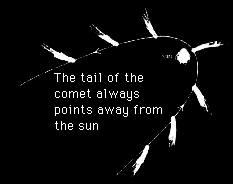This is a drawing of how a comet behaves as it passes by the sun.
Click on image for full size
JPL
The Perihelion Passage of a Comet
Comets are disturbed from their orbits in the Oort Cloud and begin a passage into the solar system, spinning and tumbling as they come. The trajectory which they acquire can be hyperbolic, parabolic, or elliptic in shape. Only if a comet acquires an elliptic trajectory will it make repeated passes to the sun, as does Halley's comet every 76 years.
As the comet comes closer to the sun, near the region of space occupied by Mars it becomes warm enough for the comet to begin to evaporate. When evaporation begins, the coma and tail form.
This picture shows that, once the tails forms, it always points away from the sun. That means that the tail will point in different directions at different places in the comet's orbit.
You might also be interested in:
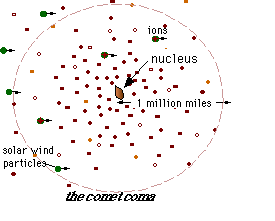
As the ices of the comet nucleus evaporate, they expand rapidly into a large cloud around the central part of the comet. This cloud, called the coma, is the atmosphere of the comet and can extend for millions
...more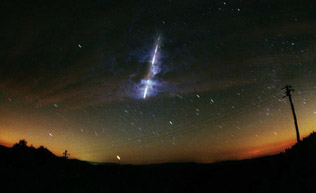
There have been predictions that this year's Leonid meteor shower could turn out to be one of the most spectacular sky events of the 21st century. The peak of this meteor shower should occur in the early
...more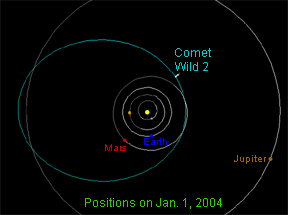
Comet Wild 2 is a short-period comet that orbits the Sun once every 6.39 years. A Swiss astronomer named Paul Wild discovered it on January 6, 1978. Wild 2 is pronounced "Vilt 2". The comet comes about
...more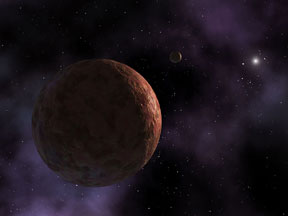
There are many icy and rocky planetoids on the outer edge of our Solar System. As a group, all bodies that orbit, on average, further from the Sun than the 8th planet Neptune are called Trans-Neptunian
...more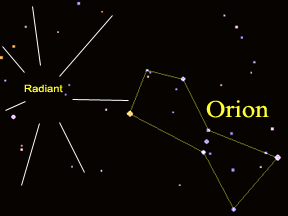
The Orionid meteor shower is one of several major meteor showers that occur on roughly the same date each year. The Orionids typically "peak" (are at their greatest level of activity) around October 21st.
...more
The Leonid meteor shower is one of several major meteor showers that occur on roughly the same date each year. The Leonids typically "peak" (are at their greatest level of activity) in mid to late November.
...more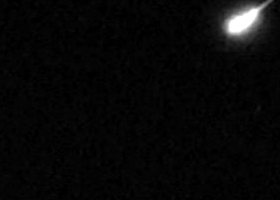
The Geminid meteor shower is one of several major meteor showers that occur on roughly the same date each year. The Geminids typically "peak" (are at their greatest level of activity) in mid December.
...more


